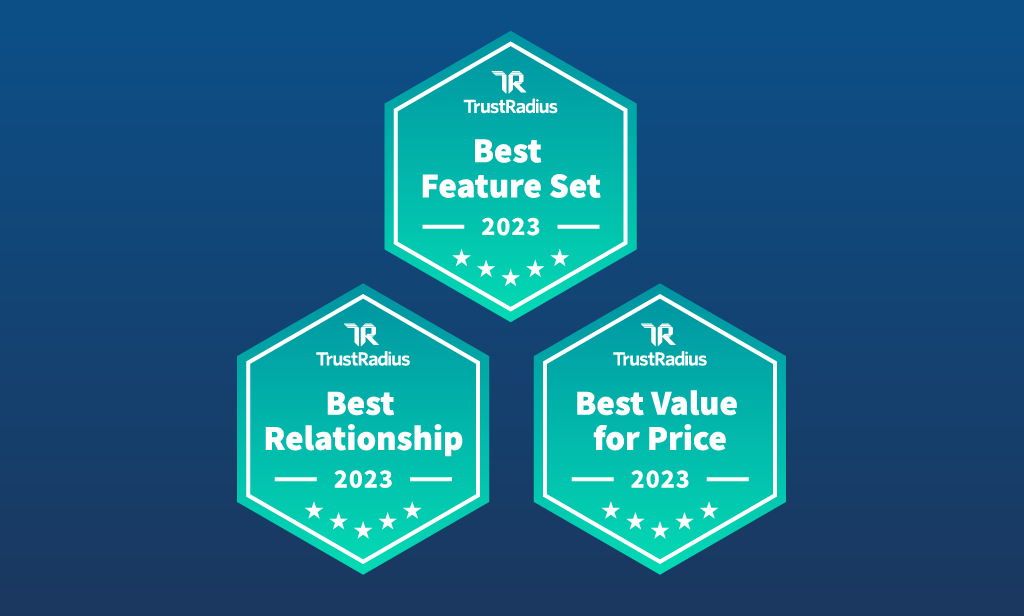Reading Time: 9 minutes
Nonprofit accountants have a unique job. The nonprofit industry involves complex reporting requirements to maintain compliance while also reporting out on program, grant, service, fundraising or donor-specific needs to illustrate operational effectiveness towards mission realization. Nonprofit finance teams also ensure reporting and allocating for these is accurate across human resources (HR), procurement, and other aspects of running an organization, alongside evolving efficiency and security demands.
Nonprofit accounting software is crucial for completing these tasks effectively and ultimately supporting your nonprofit’s goals. Organizations typically need these overarching capabilities and features in nonprofit fund accounting tools to make the most progress toward the mission.
Robust Budget Management
Every organization has a budget, but few are as complicated and varied as a nonprofit budget. Thanks to transparency initiatives and reporting regulations, nonprofits also face more pressure to make the most of their funds. To meet these demands and optimize budgets, nonprofit accountants need a wide range of budgeting tools. These resources often improve tracking, documentation, or efficiency.
1. Tracking and Monitoring
A nonprofit’s cash flow can change drastically from month to month, but a good tracking solution helps you keep an eye on both the big picture and smaller details. Your accounting software should help you track and monitor statements, grants, and tax-exempt transactions and integrate them with your general ledger or budget worksheet.
Ideally, nonprofit budgeting programs will help maintain appropriate documentation and watch for issues like fraud to ensure for a smooth nonprofit audit. Over a third of organizations in one MIP study said they perform activities that involve fraud risk — proactive monitoring, and regular usage of internal controls, can combat this costly problem.
Tracking and monitoring can also help you prevent higher-than-anticipated expenses or underutilized funds. For example, you might receive alerts or notifications when your spending exceeds or falls below a specified budget. Then, your team can make smarter decisions about the future and pivot as necessary for more financial stability.
2. Double-Entry Accounting
Many nonprofits use double-entry accounting, a useful accounting method that records transactions in multiple types of financial records and balances out both entries. For instance, buying an asset with cash would create a credit to your inventory and a debit to your cash capital.
Your nonprofit’s accounting solution should support double-entry systems, which can help you build a holistic record of your finances and prepare for audits.
3. Collaborative Tools
Large and small accounting teams can benefit from collaborative tools that boost transparency and connect different stakeholders. Editing the same budget worksheet, adding contextual notes to documents, and saving revisions of budget worksheets are just a few examples of how your accounting software can facilitate budget collaboration virtually, and quickly through e-mail notifications, compared to manual in-person approvals which can take time as well as incur paper waste.

By sharing documents with stakeholders, everyone works from the same data, which helps eliminate data siloes, errors, and miscommunications. Plus, having a single source of information reduces the chance of errors during manual data entry, which you might see if you copy entries over from separate spreadsheets.
4. An Easy-to-Use Interface
Many individuals might work on budgets, and each one relies on diverse factors, so a simple interface goes a long way in navigating budget management. For example, if your employees have a general knowledge of Microsoft Excel, a similar interface can help them quickly access familiar tools and navigate the platform well.
Some elements to consider in nonprofit fund accounting tools include:
- Worksheet manipulation: Is the process of editing worksheets intuitive to users?
- File attachment: Can you easily add external files from various formats?
- Navigation: Does the software let you quickly drill down into specific sections of your budget?
- Simple setup and customization: Can you use a setup wizard or other guidance to customize budgets and the overall platform to your needs?
Efficient, Accurate Reporting and Documentation
Nonprofits must meet a wide range of documentation requirements. Some, like tax documents, help you avoid penalties, while others, such as grant reports, help secure funding and further your mission. Whether you’re compiling reports for regulators, grantors, donors, the IRS, or other stakeholders, you’ll need software that helps you create complete and correctly formatted documents.
1. Automation and Templates
Some of the most efficient features of nonprofit accounting systems come from automation and stored templates. With templates, you can access prebuilt options or create your own to generate reports and bills in a few clicks. Examples of these templates include:
- Balance sheets
- Revenues and expenditures
- Financial position statements
- Activities and income statements
- General ledger reports
- Cash flow reports
Automation features can also help you save time by creating seamless, paperless workflows and eliminating time-consuming processes, such as bank reconciliation.
2. Compliant Reports
You likely need to meet various compliance requirements for different entities. For instance, nonprofits typically must abide by generally accepted accounting principles (GAAP), so your reports should support full compliance. Accounting software can help generate all necessary documents and format them to meet regulations. With compliant reports, you can stay audit-ready.
3. Analytics and Forecasting

You can leverage the data at your fingertips through a robust analytics solution. Accounting software with analytics capabilities can help you reduce risk and improve operations through predictions, patterns, and better decision-making processes. You might generate detailed charts and filter them down into precise types of data, or you could use custom dashboards to give stakeholders at-a-glance information in real time.
You can use analytics in many ways, but you’ll need the right software solution to access this resource. Look for a solution that integrates multiple types of data, such as budgeting and payroll information.
Streamlined Payroll and HR Management
Despite their unique structure, nonprofits must still pay, manage, and administer benefits to employees. Your accounting software can greatly simplify these processes and help your team work more efficiently and accurately. A scalable accounting system is essential for organizations that intend to grow in the future.
1. Integrations With Related Modules
Accounting tasks can heavily overlap with HR processes, and integrating this information streamlines workflows. For example, your software can calculate wages based on your HR records. By eliminating manual entry or duplicate records, you can boost efficiency and accuracy. Spend less time processing payments and more time achieving your organization’s mission.
Other benefits of integrating these two departments include:
- Highly organized payments and documentation.
- Simple scalability due to minimal manual processes.
- Easier compliance from linked reporting and stronger security.
- Better data management with a single source of information.
2. HRM Resources
HR management (HRM) encompasses many tasks and processes, and you can greatly simplify them by using an accounting platform with tools for HR management. One valuable resource is a repository for logging employee records, including:
- Employee status information: By identifying statuses like full-time, contractor, or veteran, you can more easily generate accurate reports and calculations. You will need this type of information to meet regulations like the Family and Medical Leave Act (FMLA) and Equal Employment Opportunity (EEO) programs.
- Tax information: Similarly, tracking employee information, such as dependants and spouses, can help you correctly populate tax forms like W-2s, 1099s, and 1095s.
- Education: Track qualifications, such as certifications and licenses, to monitor ongoing education opportunities or upcoming renewal requirements. This information will also inform your budget. Recording qualifications also helps with compensation decisions.
- Audit trails: Keeping a log of interactions with employee information can help ensure security and provide a record of any changes.
Another useful HRM tool is a self-service portal for employees. These resources allow workers to update information, submit timesheets, and complete other tasks from any device connected to the Internet. Employees have full transparency into their records and can avoid errors by entering or confirming information themselves. HR teams also benefit from a reduced workload and more accurate employee data.
3. Easy Benefits and Payment Processing
Nonprofit accounting software can eliminate cumbersome compensation processes like enrolling workers in benefits plans or issuing paper checks. From your software, you might allow workers to choose and set up their plans online, covering benefits like health insurance, paid vacation, and stipends. Your team can set up intricate calculations to determine a worker’s rates and benefits and generate rules, summaries, and other details.
Compensation, reimbursements, and monetary benefits are also easy to provide with payroll automation that turns issuing checks into a hands-off process. Direct deposit is overwhelmingly the most common payment method and is often preferred for its convenience and reliability. The right accounting system helps you issue direct deposits while staying compliant with Nacha, the organization that oversees the Automated Clearing House network in the United States.
If you prefer paper checks, nonprofit fund accounting resources may also help by generating printed statements and allowing you to designate employees as recipients of either direct deposit or checks.
Smooth Procurement Processes
For many nonprofits, procurement processes are complex and time-consuming. Components range from purchase orders and encumbrances to bid solicitation and electronic requisitions. Procurement introduces several opportunities for errors, with steps that span multiple departments and approvals. With the following features, nonprofit accounting software can help organizations optimize the purchasing process and effectively leverage resources across teams.

1. Tracking and Automation
A robust tracking system helps account for every step of the process, supporting an organized and complete purchase. Access to real-time updates enables you to make better decisions and create accurate reports and documents, such as purchase orders. By setting up alerts and notifications, you can also avoid purchases that exceed defined budgets or cause overdrafts.
Software can automate the workflow, reducing your team’s time commitment and speeding up the overall purchasing process. You can automatically send approvals to the right people for fast, reliable oversight. Plus, digital systems make it easy to go paperless.
2. Integrations
With seamless integration, your accounting and procurement systems communicate without any importing or exporting. Link transactions with encumbrances and budgets, and incorporate information from diverse sources for the full picture. Connected systems can help you save time and improve visibility between these functions.
3. Electronic Documentation
Digital systems allow you to eliminate paper-based processes and make purchases more quickly and securely. You can automate workflows with clear approval processes and maintain comprehensive records. Some of the items you can use with nonprofit accounting software include:
- Electronic requisitions: These standardized documents are ideal for creating audit trails and accountability through formal requests.
- Purchase orders: Integrating purchase orders with Accounts Payable, Inventory, Electronic Requisitions, and Encumbrances can ensure efficient and user-friendly documentation.
- Fixed assets: Record purchases with comprehensive asset entries that track your resources and calculate depreciation and disposal costs.
Easily share documents and gain approvals with digital workflow tools from your accounting software.
Strong Technical Infrastructure
The technical infrastructure of a nonprofit’s accounting program significantly affects many aspects of operation, from efficiency to compliance. A robust, purpose-built program helps you avoid adopting too many systems that crowd your tech stack and increase complexity. By implementing software designed for the nonprofit industry, you can better ensure your accounting system has an appropriate technological foundation.
1. Reliability and Accessibility
If your data is spread across multiple locations in your organization, such as different platforms or devices, employees might be unable to access the information they need. Consider two team members revising a budget who must send documents back and forth over email. They can’t collaborate in real time and may end up with multiple copies of outdated information.
A cloud-based accounting program can provide dependable, 24/7 access to online records, even if you don’t have a large IT team. If you’d rather host your system yourself, an on-premise accounting solution is also a good option. Both can offer convenience and reliability while meeting your team’s needs.
2. Ease of Use and Implementation
Any software solution your organization adopts should be easy to use. A high learning curve can make accounting systems frustrating for employees and harder to use. Minimizing this training period helps improve efficiency and reduce errors. Look for an accounting platform with a familiar, intuitive interface and extensive customer support, such as training services and guides.
Similarly, a long, drawn-out implementation process is challenging to work with as you mesh the old and new systems. Look for an accounting platform you can quickly get up and running.
4. Compliant Security Practices
Today’s dynamic cybersecurity landscape and evolving regulations make cybersecurity a crucial consideration. Nonprofit accountants need compliant solutions that leverage modern security protocols and technology. Your system should incorporate best security practices like multi-factor authentication and user permissions. It should also meet technical requirements outlined by relevant standards, such as those from the Financial Accounting Standards Board (FASB) and the Governmental Accounting Standards Board (GASB).
Compliance with System and Organization Controls (SOC) can also provide more reassurance about how a software provider approaches security, availability, confidentiality, and processing integrity. This endorsement comes from the American Institute of Certified Public Accountants (AICPA).
Update Your Nonprofit Accounting With MIP Accounting

The unique operating environment of a nonprofit calls for capable software built for the job. With the right solution, you can spend less time on administrative processes or money management and more time making progress toward your mission. MIP is a comprehensive software suite designed for the needs of nonprofits, with multiple modules to match your goals.
We used decades of expertise to create a user-friendly yet intricate program that can support accounting demands for different roles and types of organizations. With MIP, you get hundreds of built-in report templates, compliant systems, and a scalable solution that grows with your nonprofit. Request your demo today to see MIP in action and how it might look in your accounting workflows.




